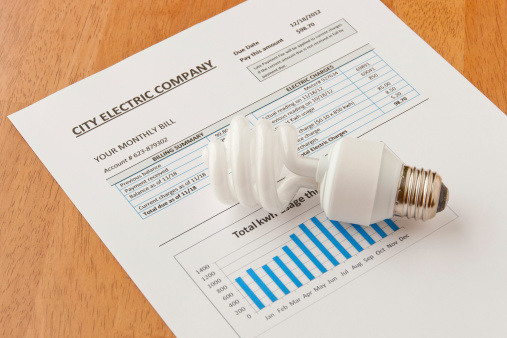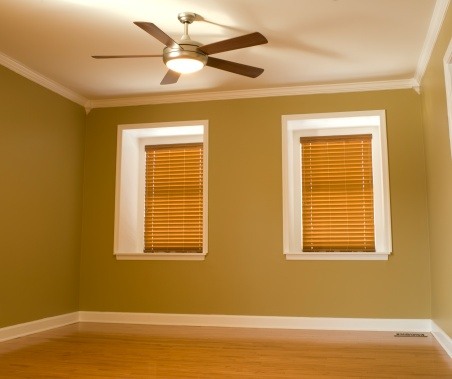 If you've ever used a tube of icing to scroll someone's name on a cake, you can caulk your windows. If you've ever secured an envelope with plastic tape, you can apply weather-stripping. And if you've wrapped a birthday or holiday gift, you can make a temporary double-pane window.
If you've ever used a tube of icing to scroll someone's name on a cake, you can caulk your windows. If you've ever secured an envelope with plastic tape, you can apply weather-stripping. And if you've wrapped a birthday or holiday gift, you can make a temporary double-pane window.
These winterizing tasks may sound overly simple, but winterizing your windows with caulk, weather-stripping and perhaps clear plastic or vinyl sheeting is one of the surest ways to keep your electric bill in check this winter.
Making your windows airtight is vital to your home energy efficiency: While heating probably represents about 30 percent of your total energy bill, as much as 25 percent of the heat you're paying for might be sneaking right out your windows via cracks, gaps and holes, according to the U.S. Department of Energy.
Identify problem spots
Keep your sanity by approaching this winterizing project with a plan of attack. Your home probably has several windows in each room, and even if you've recruited a helper, it probably will take you some time to do a proper sealing job on each window.
Begin with a thorough visual inspection of each window, inside and out. But don't stop there; looks can be deceiving. Check for cracks, gaps or holes by:
- Waiting for a breezy day and running a feather, long-stemmed lighter or a smoke pen alongside the window. Look for signs of movement.
- Waiting for a similarly breezy day and dampening your hand with water to sensitize it to air. Run your hand around the casing of the window to pinpoint problem spots.
- Waiting until dark, turning off the lights in the room and shining a flashlight around the perimeter of the window, inside and out. Problem spots will literally come to light.
As soon as you locate a problem spot, mark it promptly with a sticky note. (Just make sure it sticks, lest your hard work up to this point goes – you guessed it – right out the window).
>>Need Electrical Help? Contact Our Chico Electricians Today!
Caulk or weather-stripping?
Before moving forward, you're smart to stop and assess whether you should use caulk or weather-stripping. While both can be used to seal air leaks, remember this handy differentiator from the department of energy:
“Use weather-stripping in your home to seal air leaks around movable building components.... For stationary components, caulk is the appropriate material for filling cracks and gaps.”
Read the instructions on the caulk tube or weather-stripping package before proceeding. Then collect some tools, including rags or paper towels (for cleanup), a putty knife, a pair of scissors (for the weather-stripping) and a plastic bag to dispose of garbage. Clean the window to ensure good adhesion and dry it thoroughly so that you don't unwittingly seal in moisture.
Caulking tips
- Apply caulk when humidity is low and the outdoor temperature is at least 45 degrees Fahrenheit.
- Experiment until you can comfortably hold the caulk gun at a consistent angle. When the caulk spills out of the tube and directly into the crack, you'll know you've hit your stride.
- Caulk a crack in one continuous stream rather than in a series of fits and starts.
- Err on the side of applying a thicker layer of caulk rather than a thinner one.
- If the caulk spills out of a crack, simply steer it back into place with a putty knife.
Weather-stripping tips
- Apply weather-stripping when the outdoor temperature is at least 20 degrees Fahrenheit.
- Place weather-stripping between the sash and the frame. It should not interfere with the operation of the window.
- Measure the area you wish to seal and then cut the weather stripping to size (rather than risk waste by running the material along the window and then cutting it).
Improvise a double-pane window
Try not to feel too disillusioned if you encounter a window (or windows) that are deteriorating. Many homeowners do at this time of year.
If the time isn't right for you to invest in new energy-efficient windows to help your electric bill, then rouse your can-do spirit and make a temporary double-pane window with clear plastic or vinyl sheeting. Hold the material in place with weatherproof tape or duct tape, trim or tacking strips. Alternatively, purchase shrink film, for which you'll need a hair dryer to secure the film tightly over the window.
Window treatments matter
Once you've come this far in making your windows airtight, consider the role of your window treatments and:
- Keep them open on sunny days
- Close them on cloudy days and at night
- Consider quilted drapes or those with an insulating liner or vinyl shades – all of which can reduce heat loss.
Just as you're probably zipping up a coat or jacket at this time of year, it pays to zip up your windows. Contact Experts In Your Home if you need a hand. When it comes to reducing our customers' electric bills and increasing home energy efficiency, we are experts in your home.








